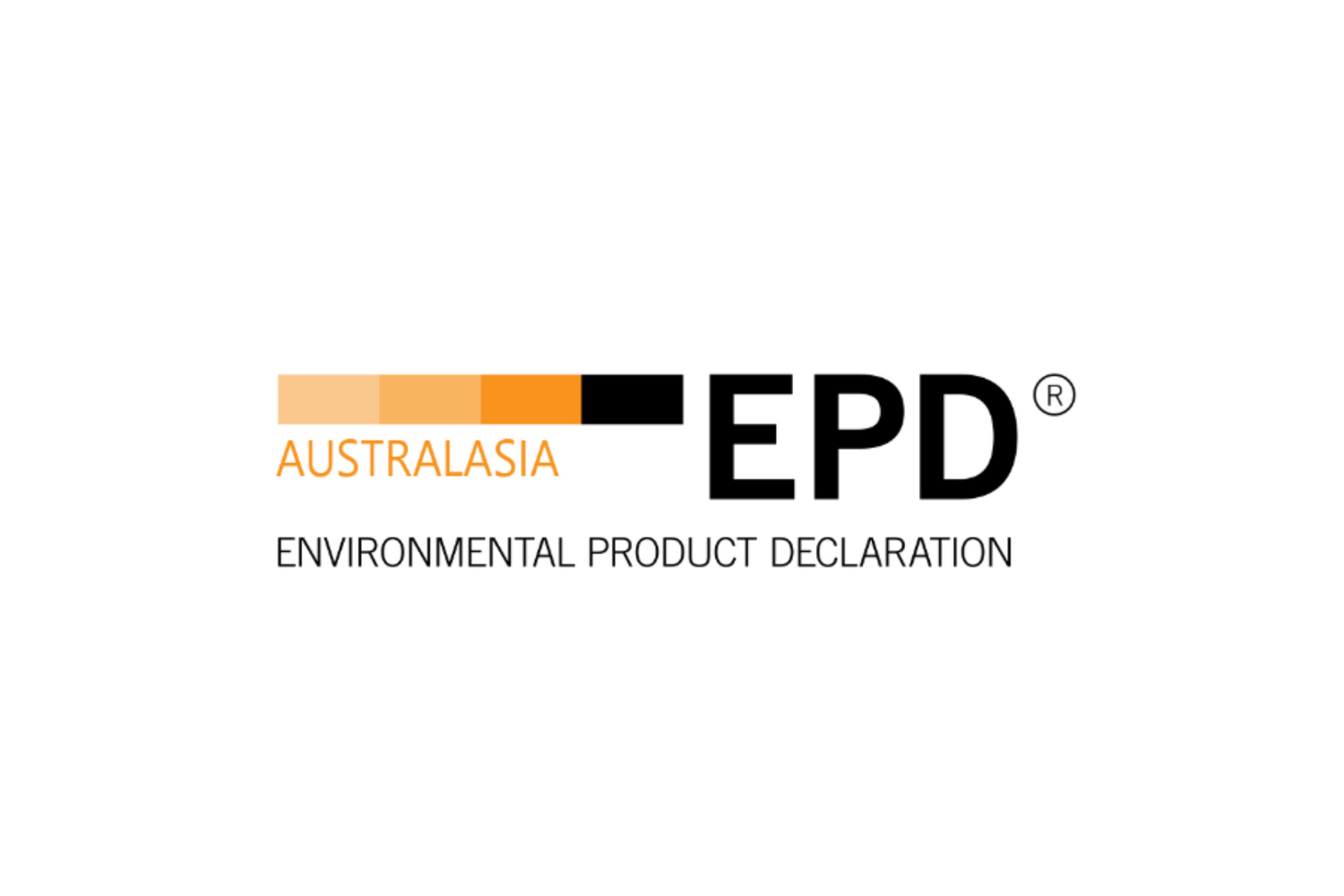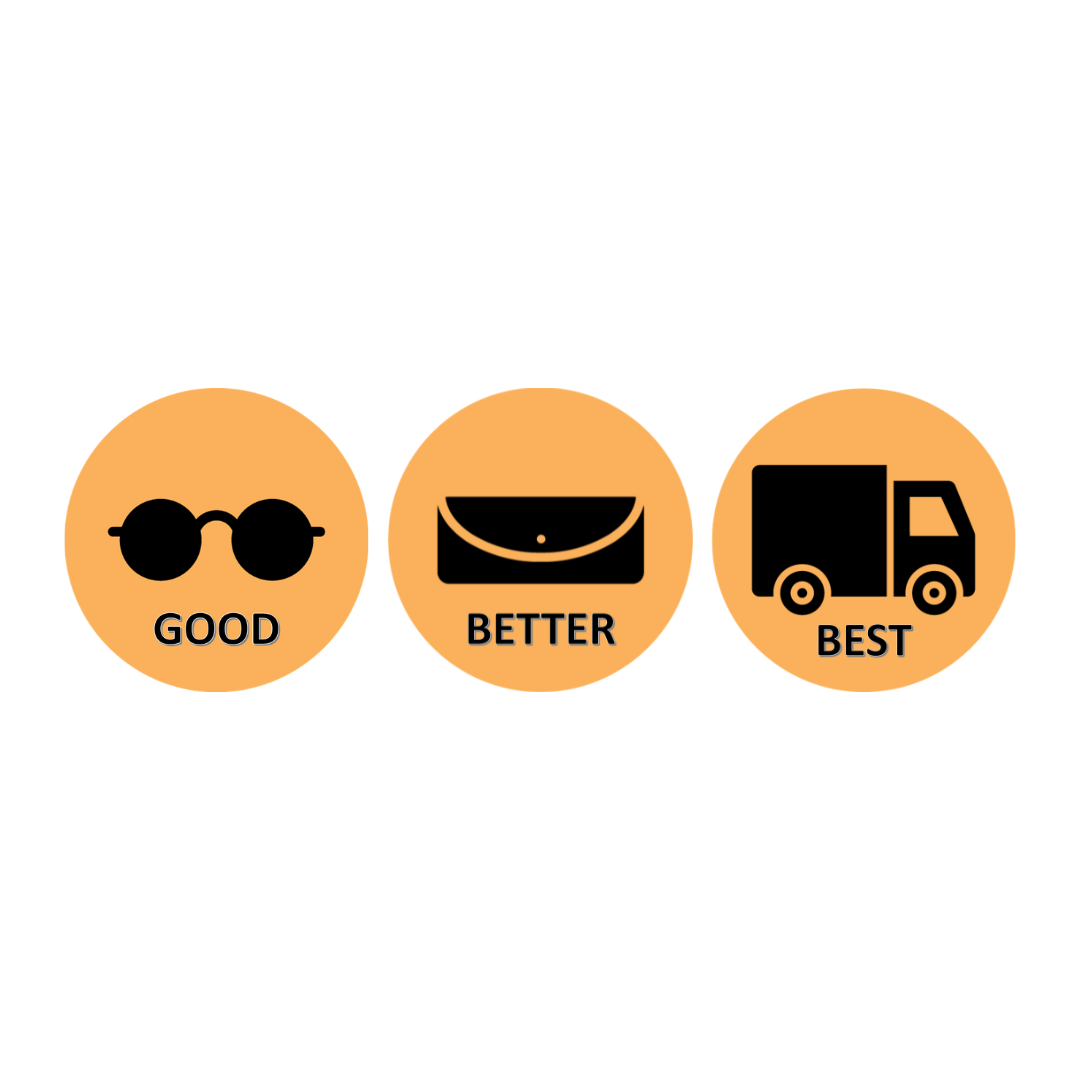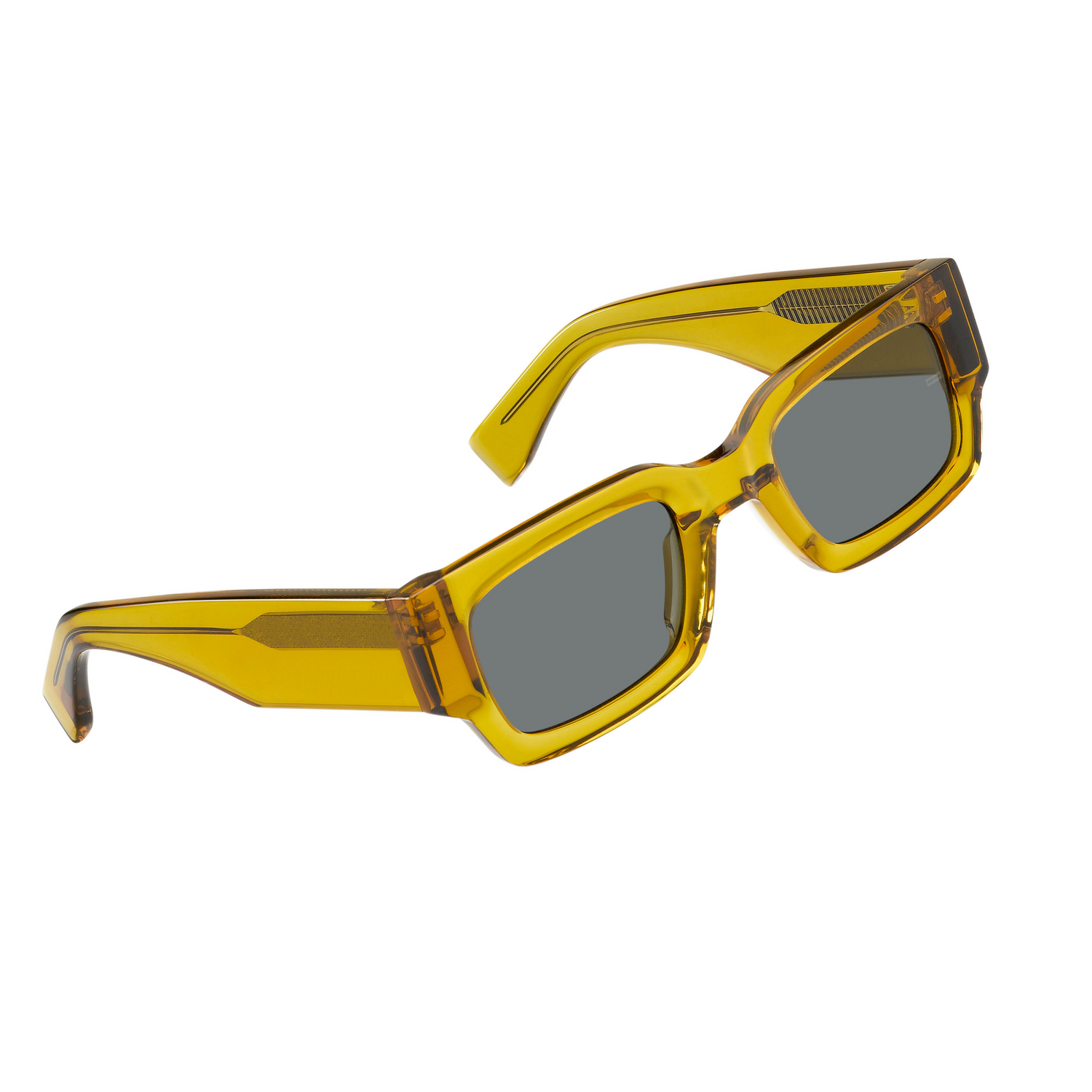The Criteria
The criteria for the Rating System has been devised based on EPD data and how this impacts the environment.
Frames, Lenses & Cases
Products and cases are assessed by the material used to manufacture them. Those products and cases made from materials that have a lower impact on the environment are scored favourably. As a general rule, recycled materials are better for the environment then bio-based according to current data.
The process used to manufacture both the frames, lens and case is then assessed accordingly to whether it uses renewable energy and/or if low waste technologies have been utilised.
And finally, the end-of-life protocol for the frames, lens and case is also assessed including whether it is compostable and/or recyclable, requiring no pre-processing.
Packaging & TRANSPORT
The criterion used in this category includes type of material used for transit and consumer packaging, the size of the case and packaging plus whether outbound transport emissions have been offset.


Good, Better, Best
The Rating System framework consists of 3 major categories; Product, Case, Packaging & Transport. Each of these categories receives a total score which is then translated into a rating of either GOOD, BETTER or BEST.
definitions
Recycled Materials
Fossil-fuel based material contribute significantly to environmental impacts. Recycled materials have a much smaller environmental footprint compared to virgin materials. Recycled material by definition in the rating system includes material made from other sources (i.e. recycled bottles, nylon waste, ecoPET, PET etc).
Ocean Plastics
Ocean pollution is a significant environmental issue, affecting multiple aspects. Material made from recovered ocean plastics help restore our oceans and avoid the impacts of material formation through fossil fuels. Ocean plastics are identified as bottles, nylon waste, plastic waste recovered from the ocean.
Biobased Materials
Biobased material is from renewable feedstocks of non-fossil origin. If sourced from sustainable feedstocks, biobased material has a smaller environmental footprint than fossil-based alternatives. Examples of bio-based materials include cellulose, bioplastics, bio-based resin, zein, corn starch etc.
Natural Materials
If sourced from sustainable feedstocks, natural materials have a smaller environmental footprint than fossil-based alternatives. Natural materials also have less EOL (end-of-life) impacts. Examples of natural materials include wood, bamboo and cork.
Renewable Energy
Process energy is a significant contributor to the eyewear footprint. Renewable energy has disproportionate potential in reducing eyewear's impacts. Examples of renewable energy include solar energy, wind energy, geothermal energy, hydropower, ocean energy and bioenergy.
Low-Waste Techniques
A significant portion of the waste in eyewear is during the manufacturing stage. Low waste manufacturing techniques can reduce overall impacts significantly. Examples of low-waste technology include the use of recycled water and the use of specialty chemicals to reduce the use of precious metals in the production of optical frames and sunglasses.
Compostable
There is a large quantity of waste associated with returns, unsold goods, and EOL product, all of which is routed to landfill or incineration. Environmental impacts of landfill and/or incineration can be reduced through compostable products/material. Examples of compostable materials include paper, cardboard or bioplastics.
Recyclable (requiring no pre-processing)
The inability to recycle because of design increases landfill and/or incineration which in turn increases the impact on the environment. Examples of recyclable materials
include corrugated bubble wrap, air pillows made from recycled content,
recycled cardboard and paper, corn starch packaging, mushroom packaging, seaweed packaging and biodegradable plastics and recycled plastics.
Natural / Biobased Packaging
Biobased material is from renewable feedstocks of non-fossil origin. If sourced from sustainable feedstocks, biobased material has a smaller environmental footprint than fossil-based alternatives. Examples of natural /biobased packaging
includes PLA (PolyLacticAcid), Bio-PE, Bio-PET (max 30% biobased), PBA, Cellophane, Starch based, PEF and natural rubber.
Minimal Case Size and Packaging
Cases and packaging carry a disproportionate portion of the total product weight. In most instances
it is considered excessive and given the ~20% contribution to impacts cases and packaging makes, reduction in their weight/amount will reduce overall impacts considerably.


